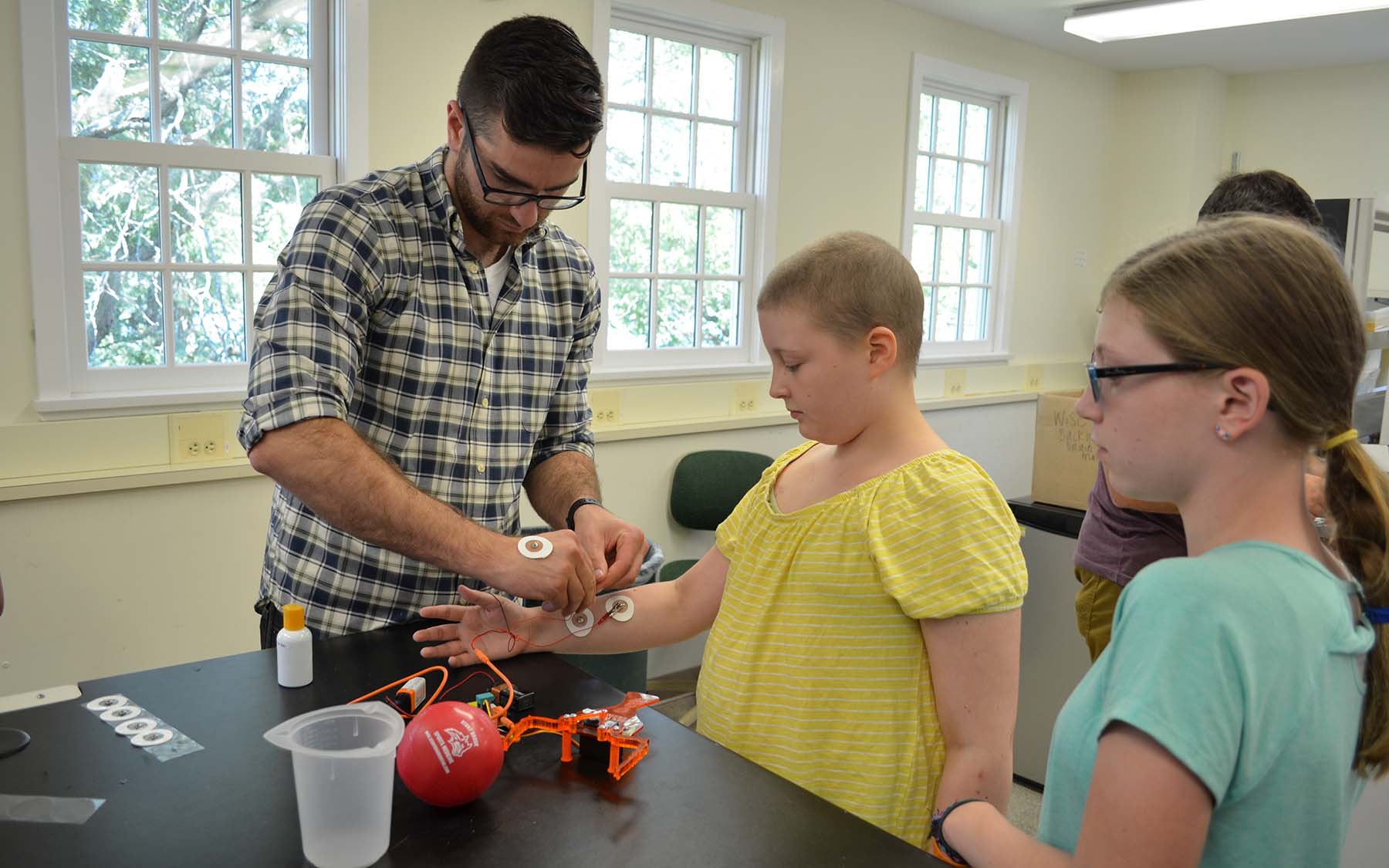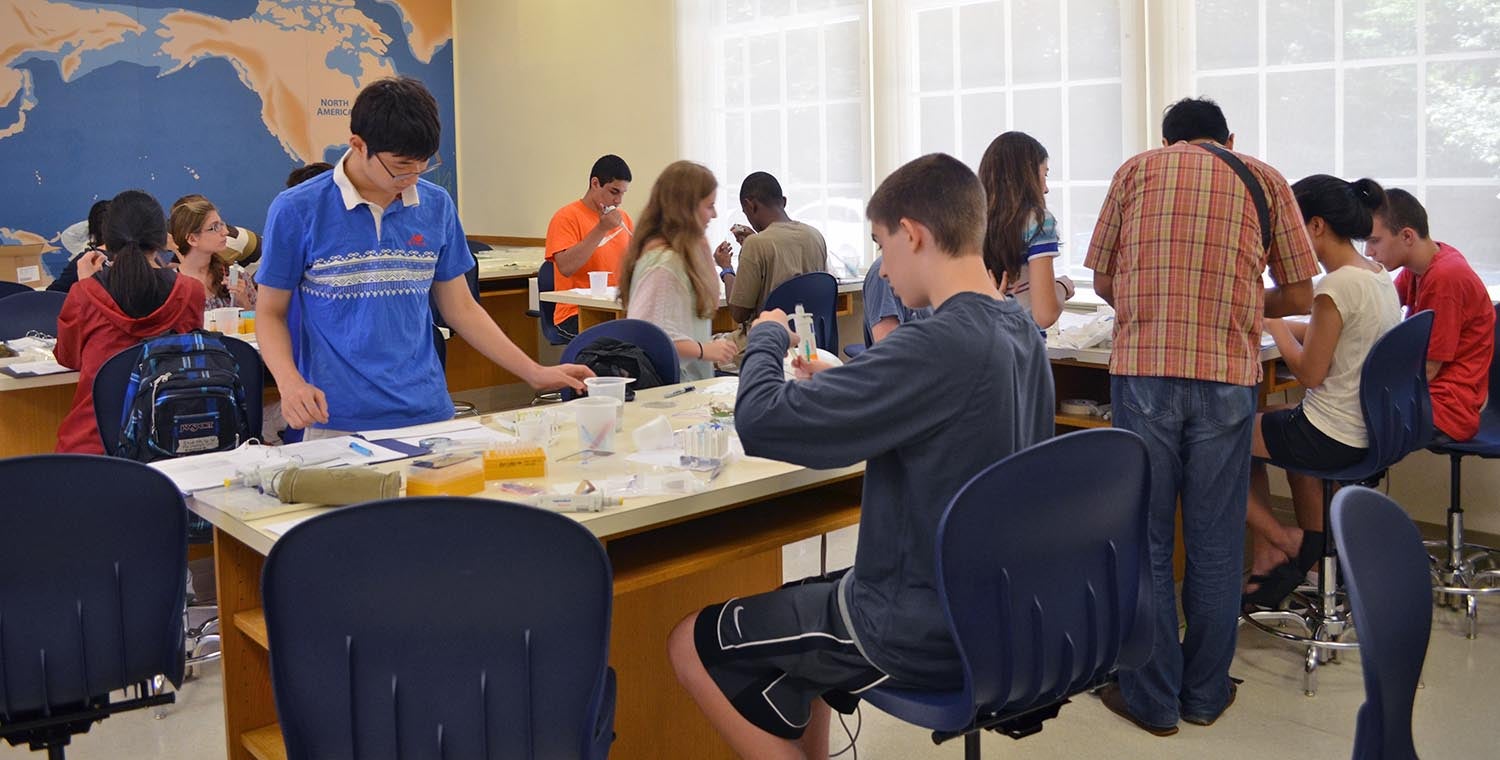In most Ph.D. programs, graduate students gain teaching experience in the college classroom—running lab demonstrations, grading assignments, and holding office hours. At the Watson School of Biological Sciences, graduate students instead teach middle and high schoolers, ranging in age from 11 to 14, at the Cold Spring Harbor Dolan DNA Learning Center (DNALC)—a dizzying hub of molecular biology education. Most school days, the DNALC teems with Long Island students sprinting past a plastic replica of Ötzi the Iceman, Europe’s oldest known natural mummy, whose shrunken body stands in a glass case in the middle of the lobby. During my first visit to the DNALC, I sat in a room where DNA sequence wrapped around the walls like sacred text, thinking to myself: how lucky am I to teach in a place like this?
All first-year Ph.D. students in the Watson School teach two courses at the DNALC: first, DNA isolation, and second, restriction enzyme digestion, or cutting up DNA with enzymes. Graduate students also have the option to teach other labs from the vast DNALC catalog, which includes classes in engineering bacteria to glow green and sequencing mitochondrial DNA. Each course begins with a brief lecture on the motivation behind the experiment. For instance, why do we care about cutting DNA? A number of excited hands shoot up during this time, as the students experience the thrill of bringing their textbook knowledge to the bench. The class then transitions into a demonstration of the method: how to transfer small liquid volumes with a pipette, make an agarose gel, or use an electric current to separate bits of chopped-up DNA. By the end of each class, students learn a fundamental molecular biology technique that researchers at Cold Spring Harbor Laboratory perform on a regular basis. But even more important, they learn how scientific research happens—as a group of people trying, just as they did in class, to answer questions about the natural world.
Teaching at the DNALC was a learning experience for me, as well—one not often found in graduate school programs. It was a lesson in eye-opening, in stepping away from the immense intricacies of biology, and communicating broad ideas that stir the human spirit, regardless of the audience’s educational background. After weeks spent showing a portrait of molecular biology to middle and high school students, I drove back to the laboratory along the banks of the inner harbor, determined to apply this lesson to my own research.

